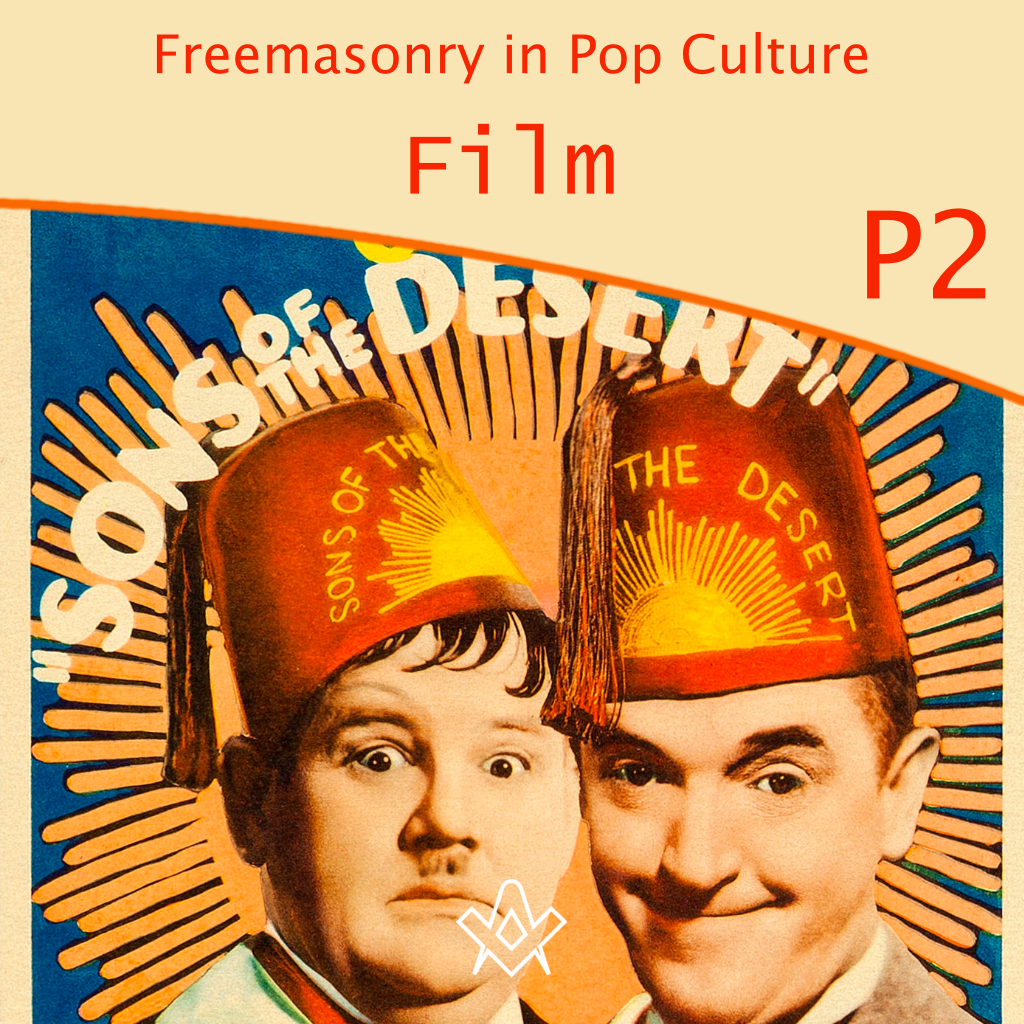Following on from Part 1 of Freemasonry in Pop Culture we take a look at Masonic depictions in film.
Are you a Mason?

Poster for the 1915 film. Famous Players / Paramount Pictures – ha.com, Public Domain,
IMAGE LINKED: wikimedia Attribution 4.0 International (CC BY 4.0)
Are You a Mason? is a 1915 American silent comedy film produced by Adolph Zukor and Charles Frohman, and distributed through Paramount Pictures.
Directed by Thomas N. Heffron, it starred John Barrymore as a young husband who pretends to join the Masons as an excuse to get out of the house.
It was based on a 1901 play by Leo Ditrichstein, who in turn adapted it from a German play, Die Logenbrüder (The Freemason), by Curt Kraatz and Carl Laufs. The comedy was filmed again as a talkie in 1934.
Frank Perry discovers that his wife desires him to become a Mason. Taking advantage of the opportunity, Perry goes out for several nights to carouse and have fun while telling his wife that he is undergoing initiation at the Masonic lodge.
When his wife invites her father, a Grand Master of the Masons, for a visit, Frank goes to comedic lengths to avoid being found out.
The farce is magnified by the circumstance that his father-in-law has also been lying about his Masonic association.
Bobby Bumps Starts a lodge (1916)
Young Bobby Bumps plays a trick on his friend who wants to be initiated into his lodge. When his friend outsmarts him and saves his life, they both agree to be initiated into the lodge together. Reference is made to a lodge apron, goat and third degree. Bray Productions, Inc. Paramount Pictures. Directed by Earl Hurd (d. 1940). Produced by J. R. Bray.*
Sons of the Desert (1933)

Cinema release window card for the film. Distributed by Metro-Goldwyn-Mayer
IMAGE LINKED: wikimedia Attribution 4.0 International (CC BY 4.0)
Sons of the Desert is a 1933 American pre-Code comedy film starring Laurel and Hardy.
Directed by William A. Seiter, it was released in the United States on December 29, 1933. In the United Kingdom, the film was originally released under the title Fraternally Yours.
Although not strictly Masonic, the organisation the pair belong to – Sons of the Desert – strongly resembles the Shriners, known formerly as the Ancient Arabic Order of the Nobles of the Mystic Shrine.
Forces Occultes (1943)

Forces occultes, Les mystères de Franc-maconnerie devoiles pour la première fois l’ écran.
IMAGE LINKED: wikimedia Attribution 4.0 International (CC BY 4.0)
Government of Vichy France propaganda which was commissioned by German Nazis in 1942.
A short film depicting the rise of a young French Member of Parliament who, on joining a Masonic lodge, realises that the Freemasons, along with the Jews, are conspiring to push France into war against Germany.
Several scenes were filmed in the offices of the Grand Orient of France, which were occupied by the French Nazi espionage service in 1940.*
Link To Video ( French Language ) recomended viewing ~ 60 mins
Hobson’s Choice (1954)

© 1954, British Lion Films/United Artists. Wikipedia linked – Fair Use.
IMAGE LINKED: wikimedia Attribution 4.0 International (CC BY 4.0)
Hobson’s Choice is a 1954 British romantic comedy film directed by David Lean. It is based on the 1916 play of the same name by Harold Brighouse. It stars Charles Laughton in the role of Victorian bootmaker Henry Hobson, Brenda de Banzie as his eldest daughter and John Mills as a timid employee.
Three comments are made regarding Hobson’s attendance masonic activities. At the beginning of the film, a drunken Henry Hobson (Charles Laughton) returns home to be greeted by his eldest daughter, Maggie, who says: “Good job your Masons meetings are only once a month”.
Next day, a scene where a visitor asks for Hobson, to be told by Maggie that he is not down for his breakfast: “…after the Masons meeting he’d had last night.” Later Maggie once more admonishes her father when he raises his voice during dinner, she says: “You’re not addressing a Mason’s meeting, now father.”
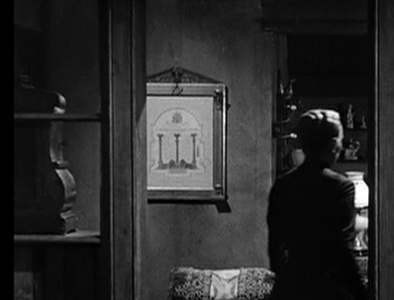
In Hobson’s office a framed Master Mason certificate is hung on the wall, later a second certificate is shown in the shop.*
Help! (1965)

Theatrical poster. Image: © 1965, United Artists. Wikipedia linked – Fair Use.
IMAGE LINKED: wikimedia Attribution 4.0 International (CC BY 4.0)
Help! is a 1965 British musical comedy–adventure film directed by Richard Lester, starring The Beatles.
The plot sees the group struggle to record their new album while trying to protect Starr from a sinister cult and a pair of mad scientists, all of whom are obsessed with obtaining one of his rings.
The soundtrack was released as the band’s fifth studio album of the same name. In one scene Ringo Starr asks an Indian restaurant doorman, “You know what this ring means?” The doorman replies, “Freemason?”
The Man Who Would Be King (1975)
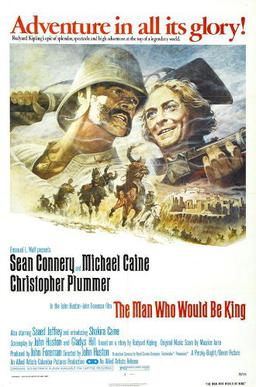
Film poster by Tom Jung – all rights reserved. Wikipedia linked – Fair Use. By Allied Artists
IMAGE LINKED: wikimedia Attribution 4.0 International (CC BY 4.0)
The Man Who Would Be King is probably one of the most famous films with direct Masonic reference. A 1975 Technicolor adventure film, it was adapted from the 1888 Rudyard Kipling novella of the same name (Kipling is well-known for his Masonic works).
It was adapted and directed by John Huston, starring Sean Connery (Daniel Dravot), Michael Caine (Peachy Carnehan), and Christopher Plummer as Rudyard Kipling.
The film follows two rogue ex-soldiers (Dravot and Carnehan), former non-commissioned officers in the British Army, who set off from late 19th century British India in search of adventure and end up in faraway Kafiristan.
Three years earlier Caine’s character had stolen Kipling’s pocket-watch, but when he found a masonic tag on the chain, he realised he had robbed a fellow Freemason, and felt he had to return it. However, their adventures intervene and when they become involved in a fight between two tribes,
During the battle, an arrow pierces Dravot’s jacket but he is unharmed.
Both sides take him to be a god, though in fact the arrowhead was stopped by his leather bandolier. Victory follows victory, with the defeated adding to the ranks of the swelling army.
With their enemies vanquished, nobody is left to stand in their way, as they are summoned to the holy city of Sikandergul by the high priest of the region.
He sets up a re-enactment of the arrow incident, to determine whether Dravot is a man or a god by seeing whether or not he bleeds.
When his shirt is torn open, they are amazed to see the masonic tag around his neck. It contains the sacred symbol left by Sikander, their name for Alexander the Great, who had promised to send a son to rule over them.
More adventures follow but only Carnehan lives to tell the tale to Kipling.
Murder by Decree (1979)

Film poster for Murder by Decree – Image: © 1979, AVCO Embassy Pictures. Wikipedia linked – Fair Use.
IMAGE LINKED: wikimedia Attribution 4.0 International (CC BY 4.0)
Murder by Decree is a 1979 mystery thriller film directed by Bob Clark.
It features the Sherlock Holmes (Christopher Plummer) and Dr John Watson (James Mason) characters created by Sir Arthur Conan Doyle, who are embroiled in the investigation surrounding the real-life 1888 Whitechapel murders committed by “Jack the Ripper“.
The film’s premise of the plot behind the murders is influenced by the book Jack the Ripper: The Final Solution (1976), by Stephen Knight, who presumed that the killings were part of a Masonic plot.
The original script contained the names of the historical suspects, Sir William Gull and John Netley.
In the actual film, they are represented by fictional analogues: Thomas Spivy (Gull) and William Slade (Netley). This scenario was later used in other Jack the Ripper themed fiction, including the graphic novel From Hell.*
Flash Gordon (1980)

Film still of General Klytus from ‘Flash Gordon’ [1980]. Image: © 1980, Columbia-Emi-Warner Dists Ltd. Fair Use
IMAGE LINKED: wikimedia Attribution 4.0 International (CC BY 4.0)
Flash Gordon is a 1980 space opera film directed by Mike Hodges, based on the King Features comic strip of the same name created by Alex Raymond.
The film follows star quarterback Flash Gordon (Sam J. Jones) and his allies Dale Arden (Melody Anderson) and Hans Zarkov (Topol) as they unite the warring factions of the planet Mongo against the oppression of Ming the Merciless (Max von Sydow), who is intent on destroying Earth.
General Klytus (Peter Wyngarde), the metal-faced head of the secret police is shown wearing a uniform with the square and compasses on the front.
Conspiracy Theory (1997)
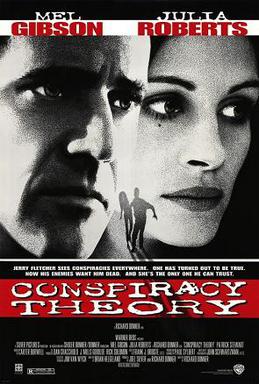
Film poster for Conspiracy Theory. Image: © 1997, Warner Bros.
IMAGE LINKED: wikimedia Attribution 4.0 International (CC BY 4.0)
American political action thriller film directed by Richard Donner. The original screenplay by Brian Helgeland centres on an eccentric taxi driver (Mel Gibson) who believes many world events are triggered by government conspiracies, and the Justice Department attorney (Julia Roberts) who becomes involved in his life.
In one scene Jerry Fletcher says “I mean George Bush knew what he was saying when he said New World Order, you remember those fatal words, New World Order? Well he was a 33rd degree Mason you know and an ex-director of the CIA.”. Justice department lawyer, Alice Sutton (Sandra Bullock), replies: “I suppose they have a secret handshake.”
End of Days (1999)

Film poster for End of Days – Image: © 1999, Universal Studios.
IMAGE LINKED: wikimedia Attribution 4.0 International (CC BY 4.0)
End of Days is a 1999 American supernatural action horror film directed by Peter Hyams.
The film follows former New York Police Department detective Jericho Cane (Arnold Schwarzenegger) after he saves a banker (Gabriel Byrne) from an assassin, finds himself embroiled in a religious conflict, and must protect an innocent young woman (Robin Tunney) who is chosen by evil forces to conceive the Antichrist with Satan.
At one point Schwarzenegger reveals an amulet saying “Now this amulet is from a Masonic Order in the former subheredom of the Vatican Knights, the Knights of the Holy See. They await the return of the dark angel to earth.”
Affair of the Necklace (2001)

Film Poster Image: © 2001, Warner Bros
IMAGE LINKED: wikimedia Attribution 4.0 International (CC BY 4.0)
The Affair of the Necklace is a 2001 American historical drama film directed by Charles Shyer and featuring Hilary Swank as Countess de la Motte, who was an instigator in what became known as the Affair of the Diamond Necklace, an incident that helped fuel the French populace’s disillusionment with the monarchy, which eventually led to the French Revolution.
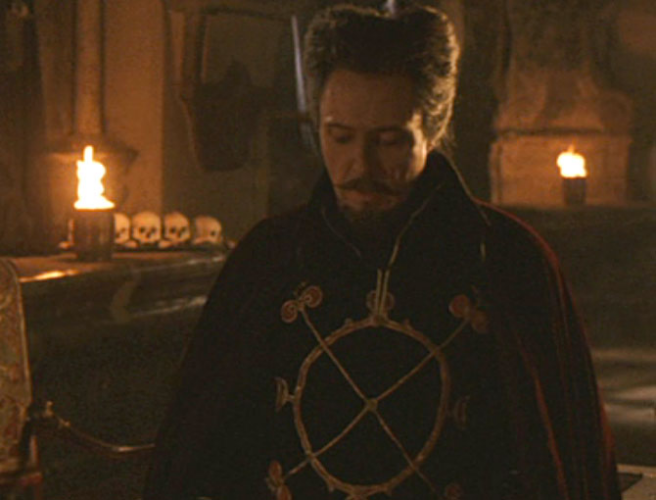
Christopher Walken as ‘Count Cagliostro’. Image: © 2001, Warner Bros. Fair Use.
IMAGE LINKED: wikimedia Attribution 4.0 International (CC BY 4.0)
One of the main characters is Count Cagliostro – the infamous Freemason and alchemist; he is introduced by the narrator as the “Grand Master of the Illuminati, the German mystic elite.”
This is not true, as Cagliostro’s name does not appear in any of the Bavarian Illuminati published papers. There is no overt mention of his Masonic involvement but he was undoubtably involved in the ‘Affair of the Diamond Necklace’, along with Cardinal Louis de Rohan, Bishop of Strasbourg.
Jonathan Pryce plays de Rohan, who has a cabinet, which is decorated with what may be seen as Masonic symbols.
From Hell (2001)

Cinema poster. Image: © 2001, 20th Century Fox.
IMAGE LINKED: wikimedia Attribution 4.0 International (CC BY 4.0)
From Hell is loosely based on the graphic novel of the same name by Alan Moore and Eddie Campbell about the Jack the Ripper murders.
The film stars Johnny Depp as Frederick Abberline, the lead investigator of the murders, and Heather Graham as Mary Kelly, a prostitute targeted by the Ripper.
An overtly anti-Masonic subject, it narrates the Freemason/Royal Family/Jack the Ripper conspiracy trope, as seen in “Murder by Decree” (above).
League Of Extraordinary Gentlemen (2003)

Cinema release poster. Image: © 2003, 20th Century Fox.
IMAGE LINKED: wikimedia Attribution 4.0 International (CC BY 4.0)
The League of Extraordinary Gentlemen is a 2003 diesel-punk superhero film loosely based on the first volume of the comic book series of the same name by Alan Moore and Kevin O’Neill.
As with the comic book, it is set in the late 19th century. It features an assortment of fictional literary characters appropriate to the period who act as Victorian era superheroes.
The symbol of the square and compasses are noticed four times within the film; twice on a ring worn by the villainous character “The Fantom”, once on his alter ego character’s (“M”) office, and within the trailer of the film where the emblem on the doors flash as it dramatically closes.
Other than these references, there is no other overt mention of Freemasonry.*
National Treasure (2004)
Poster Image: © 2004, Buena Vista International.
IMAGE LINKED: wikimedia Attribution 4.0 International (CC BY 4.0)
Benjamin Franklin Gates, played by Nicholas Cage, descends from a family of treasure-seekers who’ve all hunted for the same thing: a war chest hidden by the American founding fathers.
This movie is yet another fictional attempt to link the Freemasons, the Knights Templar and the founding of the USA through the use of various symbols, also seen in the film’s trailer.*
National Treasure 2: Book of Secrets (2007)
Benjamin Franklin Gates, again played by Nicholas Cage, returns in this adventure sequel.
Masonic references are limited mainly to citations of a secret correspondence between Queen Victoria and Confederate General Albert Pike and a suggestion that French freemason Frederic Bartholdi incorporated a clue to the treasure in his design of the Statue of Liberty because “Masons built clues into everything.”*
The Da Vinci Code (2006)

Cinema release poster. Image: © 2006, Sony Pictures.
IMAGE LINKED: wikimedia Attribution 4.0 International (CC BY 4.0)
The Da Vinci Code is a 2006 American mystery thriller film based on Dan Brown‘s 2003 novel of the same name and rehashes a number of conspiracy theories relating to the Catholic Church, with a bit of pseudo-Masonic lingering.
In the film, Robert Langdon, a professor of religious symbology from Harvard University, is the prime suspect in the grisly and unusual murder of Louvre curator Jacques Saunière.
On the body, the police find a disconcerting cipher and start an investigation. Langdon escapes with the assistance of police cryptologist Sophie Neveu, and they begin a quest for the legendary Holy Grail.
A noted British Grail historian, Sir Leigh Teabing, tells them that the actual Holy Grail is explicitly encoded in Leonardo da Vinci‘s wall painting, The Last Supper.
Also searching for the Grail is a secret cabal within Opus Dei, an actual prelature of the Holy See, who wish to keep the true Grail a secret to prevent the destruction of Christianity.
The film, like the book, was considered controversial. It was met with especially harsh criticism by the Catholic Church, and was banned in a number of countries.
The Imaginarium of Doctor Parnassus (2009)
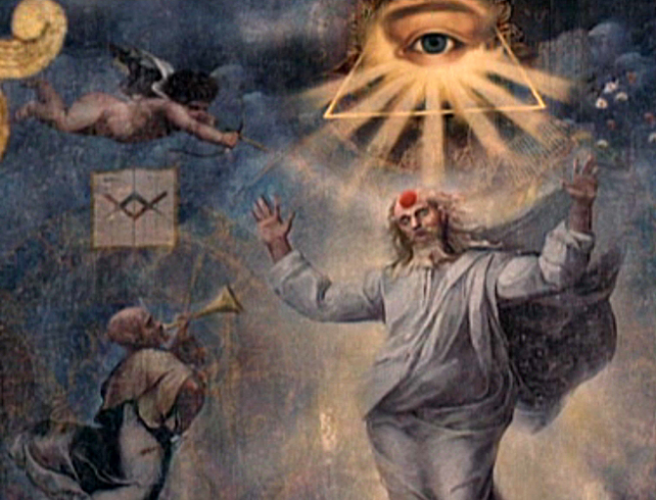
Image from the film depicting Masonic symbolism – © 2009 Terry Gilliam/McKeown
IMAGE LINKED: wikimedia Attribution 4.0 International (CC BY 4.0)
For the conspiracy-minded, The Imaginarium of Doctor Parnassus is a dream movie.
Directed/written by Terry Gilliam, and Charles McKeown, the film follows a travelling theatre troupe, whose leader having made a bet with the Devil, takes audience members through a magical mirror to explore their imaginations and present them with a choice between self-fulfilling enlightenment or gratifying ignorance.
What can be perceived as illuminati or Masonic symbols are scattered throughout the film – a square and compasses on a stage backdrop, the all-seeing eye variously in triangles or ‘glories’ abound but appear to be given a Satanic’ element.
What has been described as “Terry Gilliam’s self-described homage to Roberto Calvi (found hanged under Blackfriars Bridge on 18 June 1982), when Heath Ledger’s character Tony is found hanging under the same bridge”, with an all-seeing eye inside a triangle drawn on his forehead.*
If anything, the film is an extraordinary adventure through the multi-faceted creative minds of Gilliam and McKeown.
The Freemason (2013)
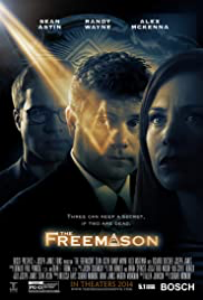
Poster for The Freemason (2013) Public Domain,
IMAGE LINKED: wikimedia Attribution 4.0 International (CC BY 4.0)
The tagline – “Freemasons don’t control everything, only the things that matter” – seems to play up to the stereotypical conspiracy theory trope, which is odd considering the director is a Freemason.
There’s not much info on this one but the synopsis from IMDb states:
“A wealthy banker lies ritualistically and brutally murdered. The banker’s daughter and only heir, Rana (Alex McKenna), calls upon Cyrus Rothwell (Randy Wayne), a brilliant but eccentric freelance writer, to assist in the investigation. Teaming up with veteran homicide detective Leon Weed (Sean Astin), they suddenly find themselves thrust into the cryptic world of Freemasonry — pitted against a killer searching for a legendary relic, shrouded by hundreds of years of myth and mystery.”
Director Joseph James is a 32nd Degree Freemason and has spent almost a decade progressing through various Masonic organizations including the Shriners, The York Rite, Gul Reazee Grotto and The Scottish Rite.
He is an actor and producer and owns Joseph James Films LLC which is a feature film production and distribution company.” [IMDb Bio]
A sequel is apparently in post-production, named (unsurprisingly) “The Freemason 2”.
Text Sources: Wikipedia (various), *Freemasonry BCY.
Further Resources:
For an extensive but not exhaustive list of films with Masonic references, containing 110 films: https://freemasonry.bcy.ca/fiction/cinema.html
Article by: Philippa Lee. Editor

Philippa Lee (writes as Philippa Faulks) is the author of eight books, an editor and researcher.
Philippa was initiated into the Honourable Fraternity of Ancient Freemasons (HFAF) in 2014.
Her specialism is ancient Egypt, Freemasonry, comparative religions and social history. She has several books in progress on the subject of ancient and modern Egypt. Selection of Books Online at Amazon
Recent Articles: Masonic Art series
 Experience the power of Masonic art like never before with our handpicked selection of NFT collections now available on Opensea. Discover stunning works of art from talented artists across the world, all inspired by the ancient traditions and symbols of the Freemasonry. Don't miss out on the chance to own a piece of history - start exploring our Masonic art NFT projects today! |
 Digital Freemasonry NFT Marketplace Unlock the digital realm of Freemasonry with our exclusive NFT marketplace, designed for the modern-day Masonic community. Become one of 333 founders of Digital Freemasonry and gain access to a range of cutting-edge digital tools for the craft. Own a unique NFT as confirmation of your contribution to this ground-breaking initiative. Join us in shaping the future of Freemasonry - start exploring our NFT marketplace now! |
 Experience the legacy of Tubal Cain like never before with our unique collection of Masonic apron NFTs. Each of the 1,000 digital designs are one-of-a-kind and serve as a symbol of Masonic pride and tradition. And for those who prefer to have a physical item, these designs are also available as collectible aprons. Don't miss out on this rare opportunity to own a piece of Masonic history - start exploring our Tubal Cain Masonic apron NFTs now! |
 Discover the transcendent power of music through the eyes of John Philip Sousa. In a world where beauty intertwines with divine inspiration, music becomes a celestial language. Sousa's belief in melodies born from higher realms challenges us to seek the profound, divine connection in our creative expressions. Let music elevate your soul. |
 In a world brimming with wonder, pain, and confusion, the concept of love transcends all boundaries. In this thought-provoking poem, the poet dives into the depths of existence, questioning the nature of love, its transformative power, and the eternal quest to understand its true essence. Prepare to explore the enigma of love, as this poem delves into its many dimensions. |
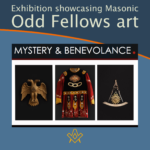 Exhibition showcasing Masonic, Odd Fellows art Art and education in the Hoyt’s newest exhibition, "Mystery & Benevolence: Masonic and Odd Fellows Art", explores the art and accessories of two fraternal organizations steeped in symbols and coded systems, from special handles, gestures and passwords to ritualized performances that probably come from the Middle Ages. |
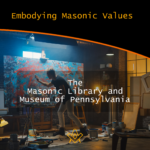 Since 2018, The Masonic Library and Museum of Pennsylvania’s “Embodying Masonic Values” open art competition has provided an opportunity for participants to explore Masonic values through art. Cash prizes are awarded to winners in five categories: Oil, Three-dimensional, Drawing and Print-making, Water-Based Medium and Digital Imagery. Most artwork is also available for sale. |
 Freemasonry in Popular Culture P4 - TV Part 4 of our series on Freemasonry in Popular Culture takes a look at some of the TV series that feature Freemasonry. With much intrigue into the supposed machinations of the Freemasons within business, politics and the police force, TV was a ripe medium for ridicule and sensationalist anti-Masonic propaganda. |
 Freemasonry in Popular Culture P3 - Comic Books and Graphic Novels Part 3 of our series on Freemasonry in Popular Culture takes a look at some of the comic books and graphic novels that feature Freemasonry. |
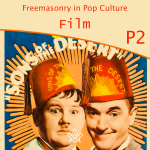 Freemasonry in Popular Culture P2 - Film Following on from Part 1 of Freemasonry in Pop Culture we take a look at Masonic depictions in film. |
 Freemasonry-membership is a mysterious NFT project that would be built across the Metaverse. Taking the idea from virtual lodges, the project is a huge mystery in terms of assets and value for the user. |
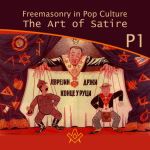 Freemasonry in Popular Culture P1 - The Art of Satire Freemasonry has been the subject of satire and lampooning since its inception in the 1700s courtesy |
 First Three Degrees of Freemasonry by Grant Wood For many of us, the name of the artist Grant Wood doesn’t ring any bells. But on a recent visit to the Grand Lodge of Iowa Masonic Library and Museums, I discovered a hidden gem – Grant Wood's vision of 'The First Three Degrees of Freemasonry'. |
 'Song of Songs' - the Shir HaShirim Freemason, composer and artistic director Laurențiu Ganea announces the premiere of his long-awaited composition of the 'Song of Songs' - the Shir HaShirim (also known as the 'Song of Solomon'). |
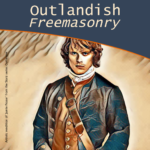 Martin Bogardus explores the Masonic characters and symbolism within the hugely successful 'Outlander' books and TV series. |
 The Masonic Art of Ari Roussimoff The Art, Masonic Aprons, and Magic of Ari Roussimoff - interviewed by Elena Llamas |
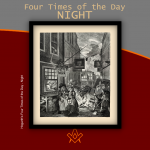 Hogarth's mockery of Freemasonry. A humorous depictions of life in the streets of London, the vagaries of fashion, and the interactions between the rich and poor. |
 This entertaining and infectious poem was written by an Ayeshire poet |
masonic knowledge
to be a better citizen of the world
share the square with two brothers

click image to open email app on mobile device
Tubal Cain
Masonic Apron NFT
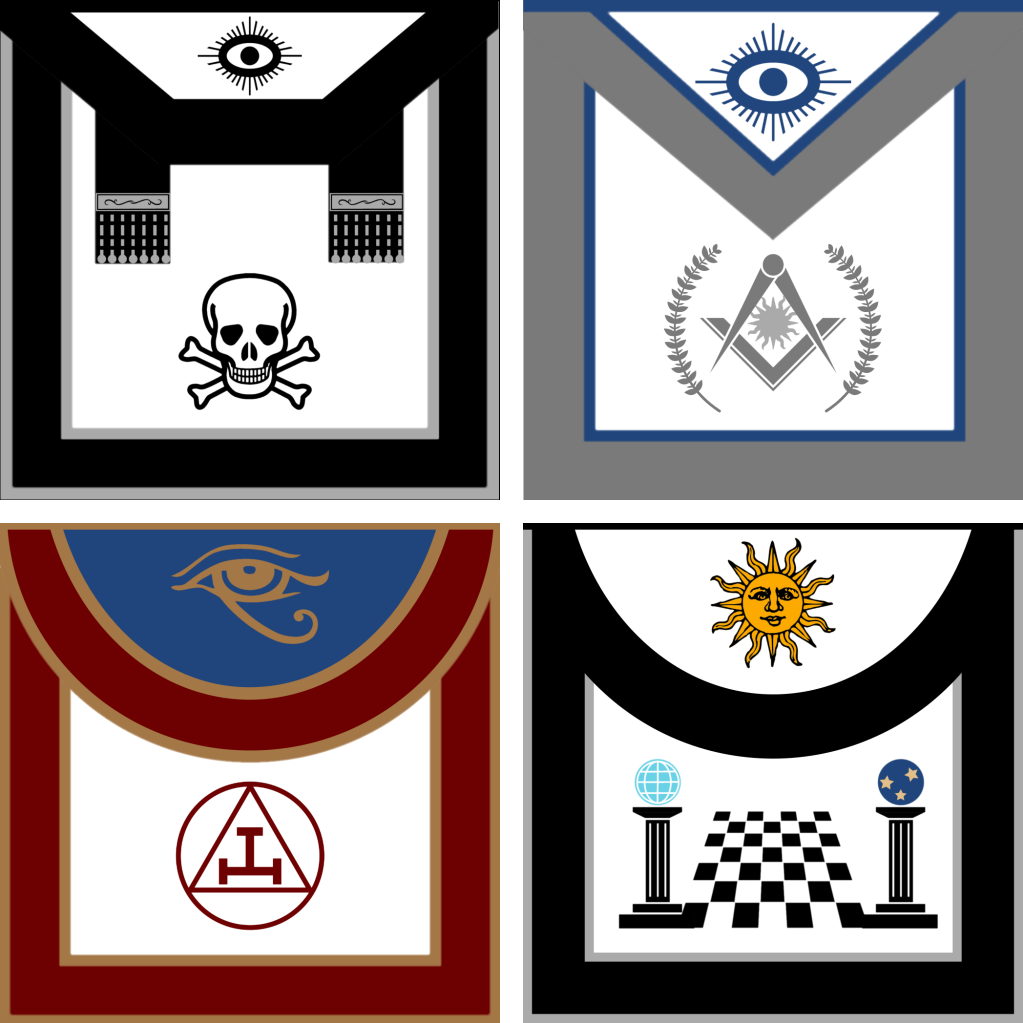


Each NFT includes the JPEG image plus a full size masonic apron and shipping worldwide
